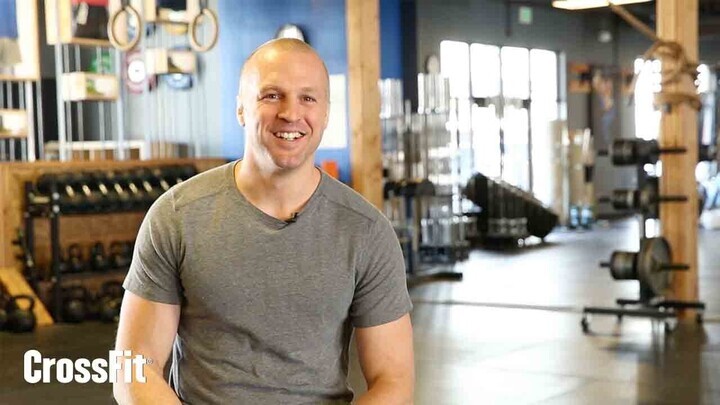Stephane Rochet (CF-L3) and Joe Alexander (CF-L4) discuss an often-debated distinction in CrossFit programming: targeting weaknesses versus biasing training.
In this discussion, you’ll learn how to distinguish between strategically addressing gaps in your athletes’ fitness and accidentally undermining their overall capacity by overemphasizing one area. Rochet and Alexander share practical strategies for proper targeting, from smart scaling approaches to accessory work that won’t compromise your general physical preparedness.
Whether your athletes struggle with strength deficiencies, gymnastics skills, or metabolic conditioning, this discussion offers clear frameworks to help elevate their weakest link without sacrificing their general physical preparedness (GPP).
Here are a few of the highlights from the video.
Understanding the Difference
- Targeting: Fixing the weaknesses or “chinks in your armor” to improve overall fitness capacity.
- Biasing: An unintended or excessive focus on one area of fitness that can decrease performance in other domains.
The Work Capacity Approach
Rochet references Dan Williams’ 2010 article, which proposes:
- Your overall fitness is adjusted to accommodate your most significant weakness
- In GPP, you’re only as fit as your most significant deficiency
- Williams’ method assigns numerical ratings to endurance, stamina, strength, flexibility, power, and speed
Practical Approaches to Targeting
The Substitution Method:
- Analyze your programming and substitute specific workouts with ones that target an athlete’s weakness
- Retain balanced programming while tilting toward addressing deficiencies
Scaling Strategy:
- When scaling workouts, occasionally, coach athletes to lift heavier loads to challenge their strength
- Be willing to sacrifice speed/rounds for appropriate loading that addresses weaknesses
- Example: Using a challenging deadlift weight in a workout, even if it slows athletes down
Accessory Work:
- Identify the underlying cause of the weakness (technique vs. capacity)
- Add 10 minutes of targeted accessory work after class
- Focus on specific weakness areas (hamstrings, posterior chain, glute med, etc.)
Technique Approach:
- How your athletes lift during regular GPP training matters
- Coach athletes to focus on intent, bar speed, and movement quality with lighter loads
- Coach athletes to treat moderate loads as heavy by accelerating the bar quickly or moving as slowly as possible
Important Considerations
- Assess First: Measure the deficiency before intervening. Track if it improves through regular CrossFit programming before adding specialized work.
- Experience Level Matters:
- Novices benefit most from consistency in basic CrossFit programming
- Intermediate/advanced athletes can more effectively implement targeting strategies
- Testing Frequency:
- Regular micro-tests keep athletes focused and motivated
- Compare athletes’ performance over time to see if targeting is working
- Transferability:
- Improving one fundamental movement often improves related movements
- Example: Better handstand holds can improve overhead pressing positions
- Focus on movements with high transferability for the greatest return on your athletes’ investment
Avoiding the Biasing Trap
- Watch for signs that other fitness domains are decreasing when you focus too much on one area.
- Be careful about adding specialized strength programs on top of CrossFit without thoughtful modifications.
- Remember the “black box” of fitness, adaptations come from multiple energy systems working together; it’s never just one thing.
The goal is to help athletes raise all aspects of their fitness simultaneously, not create dramatic peaks in one domain at the expense of others. For most people, consistency, exposure to variance, and functionality within regular CrossFit training will deliver the best overall results.
 Eric O’Connor is a Content Developer and Seminar Staff Flowmaster for CrossFit’s Education Department and the co-creator of the former CrossFit Competitor’s Course. He has led over 400 seminars and has more than a decade of experience coaching at a CrossFit affiliate. He is a
Eric O’Connor is a Content Developer and Seminar Staff Flowmaster for CrossFit’s Education Department and the co-creator of the former CrossFit Competitor’s Course. He has led over 400 seminars and has more than a decade of experience coaching at a CrossFit affiliate. He is a